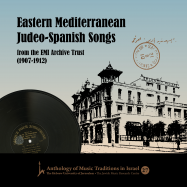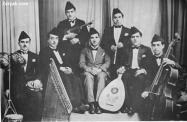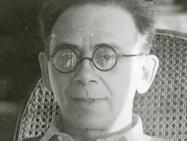(190 results found)
50. Bezokhri 'al mishkavi (Çakum Effendi)
… a slow, metered melody in makam Uşşak with an interesting rhythmic cycle of 15/4 (sometimes 16/4) per phrase. The …
27. El alma dolorida (CES)
… lines and stanza 6, four octasyllabic lines). The rhythmic instrumental refrain is repeated during the piece … with the first five stanzas that start in flexible rhythm and ornamented style in each first line moving into a more rhythmic style in the second line. La soledad de la nochada …
14. El nacimiento y la vocación de Abraham (CES)
… beat (see Weich-Shahak 2014, no. 8), and the second more rhythmical (see Weich-Shahak 2014 , no. 10). This recording …
10. La seducida en la fuente (CES)
… 14). The melody in this version, with its distinctive waltz rhythm and major scale, betrays its European pedigree. For a …
El Shokhen Shamayim - A Recorded Pearl of Andalusian Hebrew Music from Algeria Recovered
… from the Raml Maya mode, the refrain’s melodic movement and rhythm departs from recognizable patterns of Western …
Fog al-Nakhal (فوق النخل): Multicultural and Transnational Journeys of an Iraqi Folksong
… al-Nakhal.” Despite its simpler, more skeletal melodic and rhythmic structure, it still contains sufficient … and a drum set. The song is performed with added funky rhythms and electronic effects. Through this process of …
Shefa Gold
… From that, Gold's definition of chanting: the musical and rhythmic repetition of a sacred phrase from a holy text. “I …
Jeff Klepper
… of his time created was characterized by harmonies and rhythms of the folk-rock music of the late 1960s. Their idea …
A Moroccan Synagogue Service
… with fixed meter with various permutations of melodic and rhythmic formations in-between these two extremes. … of syllables of each verse. There is a steady pulse and rhythm is determined by the difference between short and … tempo gradually accelerates (2:04, 3:19). This melodic and rhythmic formula is identical to the one used to sing the …
Beregovski Collection - Nign no. 3
… 10), while the rest – three or four tones only. Asymmetric rhythmic patterns. In opposition to the limited movement of the melody, the rhythmic variability stands out. This feature brings this … as a “Freilichs”, i.e. freylekhs ). The order of the rhythmic patterns is asymmetric and yet well thought out. …









